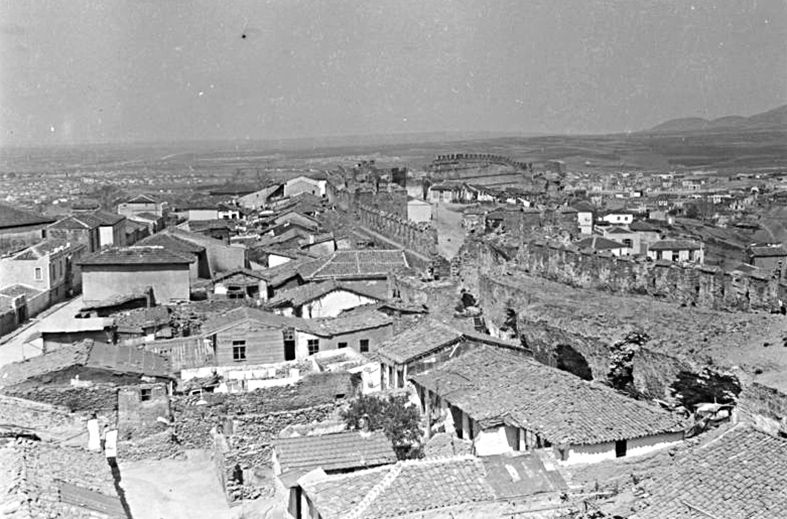‘Kastroplikta’: The houses abutting the city wall
This description by Odysseas Papaioannou, a resident of Ano Poli, is indicative of the circumstances which led to the creation of ‘kastroplikta’ (houses built using the city wall as part of the house’s architecture) and the way in which they were constructed.
These small illegal houses were built by the refugees after 1922. They have a surface area of 40 to 70 square metres, are painted in vivid colours and to this day many of them have an outdoor toilet. Their demolition was stipulated in a Presidential Decree as early as 1931 to make way for an urban green space zone next to the wall. The 900 buildings designated for demolition were called ‘kastroplikta’ (‘castle-stricken’).
From 1931 until today, the issue of demolishing the ‘kastroplikta’ and showcasing the city walls has been included in multiple urban planning programmes and redevelopment schemes. Due to these initiatives and the gradual evacuation of local residents, most of the houses are now abandoned or have already been torn down. The majority of those that remain standing in the Municipality of Thessaloniki are located on Eptapyrgiou Street along the western part of the wall. In total, there are 150 remaining ‘kastroplikta’, more than half of which are uninhabited. Since 1922, these makeshift houses built by refugees have been hosting newcomers brought to the city by successive migrations. However, the local authorities do not view them as an integral part of the city’s modern history which ought to be preserved and highlighted.
Objects

